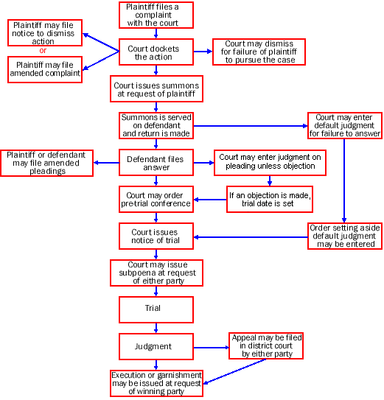In the pre-litigation stage of civil litigation, the parties involved attempt to resolve their dispute without going to court. This stage typically involves negotiation, mediation, or arbitration to reach a settlement. If a settlement is not reached, the plaintiff can choose to file a lawsuit to initiate the formal legal process.
During this stage, it is important for both parties to gather evidence, identify potential witnesses, and assess the strength of their case. This will help determine whether litigation is the best course of action or if alternative dispute resolution methods should be pursued.
Civil Litigation Procedure Flow Chart
Litigation Stage
Once litigation is initiated, the case moves into the formal court process. The litigation stage typically involves the following steps: filing a complaint, serving the complaint on the defendant, the defendant’s response, discovery, pre-trial motions, trial, and post-trial motions.
Throughout the litigation stage, both parties will have the opportunity to present evidence, call witnesses, and argue their case before a judge or jury. The goal of this stage is to resolve the dispute through a court decision that is legally binding on both parties.
Post-Litigation Stage
After a court decision is made, the post-litigation stage involves enforcing the judgment, collecting any monetary damages awarded, and potentially appealing the decision to a higher court. This stage is crucial for ensuring that the outcome of the case is carried out and that both parties comply with the court’s orders.
Overall, understanding the civil litigation procedure flow chart can help parties navigate the legal process effectively and ensure that their rights are protected throughout the course of the litigation.
